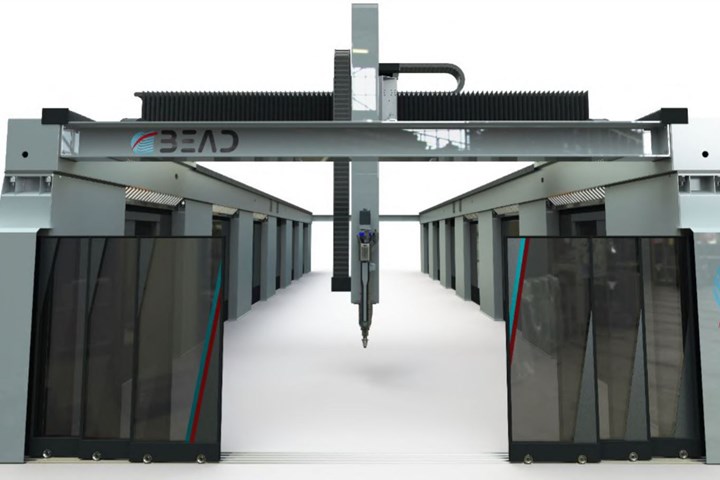CEAD and Belotti make large-scale additive composites manufacturing accessible for industry
Strategic partnership combines expertise of additive and subtractive manufacturing into single hybrid solution: BEAD.
Share
Read Next

Belotti (Suisio, Italy) has 40 years of expertise in the design, manufacturing and operational support of three- and five-axis CNC milling centers for composites, light metal alloys and advanced materials. CEAD (Delft, Netherlands), is on the frontier of composites additive manufacturing specializing in large-scale 3D printing technology and has brought multiple 3D printing solutions into the industry.
A strategic partnership between CEAD and Belotti is established to combine the expertise of additive and subtractive manufacturing into one solution. The acquired know-how and experience in both fields, combined with the innovative drive of both companies, is the strong basis of the partnership.
BEAD hybrid machine
By itself, large-scale additive manufacturing cannot deliver the finish and tolerances of subtractive manufacturing. On the other hand, subtractive manufacturing produces significant waste, which large-scale additive manufacturing typically eliminates. Combining these processes gives the best of both worlds — making it possible to 3D print near-net-shape parts and then milling to the required tolerances with a CNC machine.
CEAD and Belotti take the combination of these two processes one step further by developing a hybrid machine, introduced as the BEAD. This machine will reduce the overall investment in new equipment as well as the installation space and programming versus two separate systems. Also, because the produced parts are not moved between two machines, handling time and work-in-process are also reduced.
“This partnership is a great opportunity for the development of our companies both for technological growth and the growth of human capital,” explains Umberto Belotti, CEO at Belotti. “The young spirit of our companies and the passion for technology will be the ingredients that will allow us to get out of these complicated years and look to the future with enthusiasm and confidence.”
Numerous configurations of the BEAD are possible, ranging in build volume, output, spindles, position of the heads and more. All machines will be equipped with Siemens Sinumerik CNC automation system, as the Siemens control system has proved itself to be a strong system to both parties in their current machines.
The Sinumerik CNC automation system is characterized as a highly productive automation solution across all production domains. Based on the openness of Sinumerik, the operation can be supplemented and adapted, which makes it a perfect fit for the BEAD. All components of the system work together in a fully integrated system, which is said to allow the user to control and monitor all activities through the Sinumerik control panel/ HMI.
“This is the start of a great partnership. We will start our focus on the maritime and aerospace sector, producing molds, tooling or even end-use parts, but this is only the beginning. We see many applications to which this solution can make a sustainable and time-effective change,” explains Lucas Janssen, CEO at CEAD. “Fiber-reinforced thermoplastic materials will be used in the process, ranging from commodity materials to high-performance materials with glass, carbon or natural fibers.
Download the BEAD presentation.
Related Content
-
Plant tour: Joby Aviation, Marina, Calif., U.S.
As the advanced air mobility market begins to take shape, market leader Joby Aviation works to industrialize composites manufacturing for its first-generation, composites-intensive, all-electric air taxi.
-
From the CW Archives: Drilling is not for the faint of heart
This edition of From the CW Archives revisits CW’s first plant tour — a visit to the F-35 FAL in Fort Worth, Texas — and a story by Ginger Gardiner a few years later. Both offer lessons on how to perform stacked drilling through composite and metallic materials.
-
Developing milling for CMC because grinding takes too long
Economical processes that can cut machining time by 70% are being tested on aeroengine turbine blade demonstrators by Hufschmied and DLR in the SCANCUT project.
















